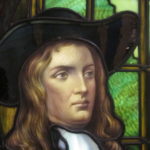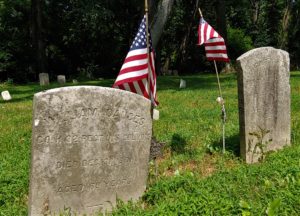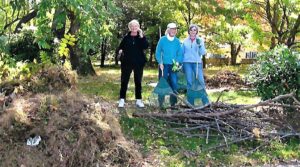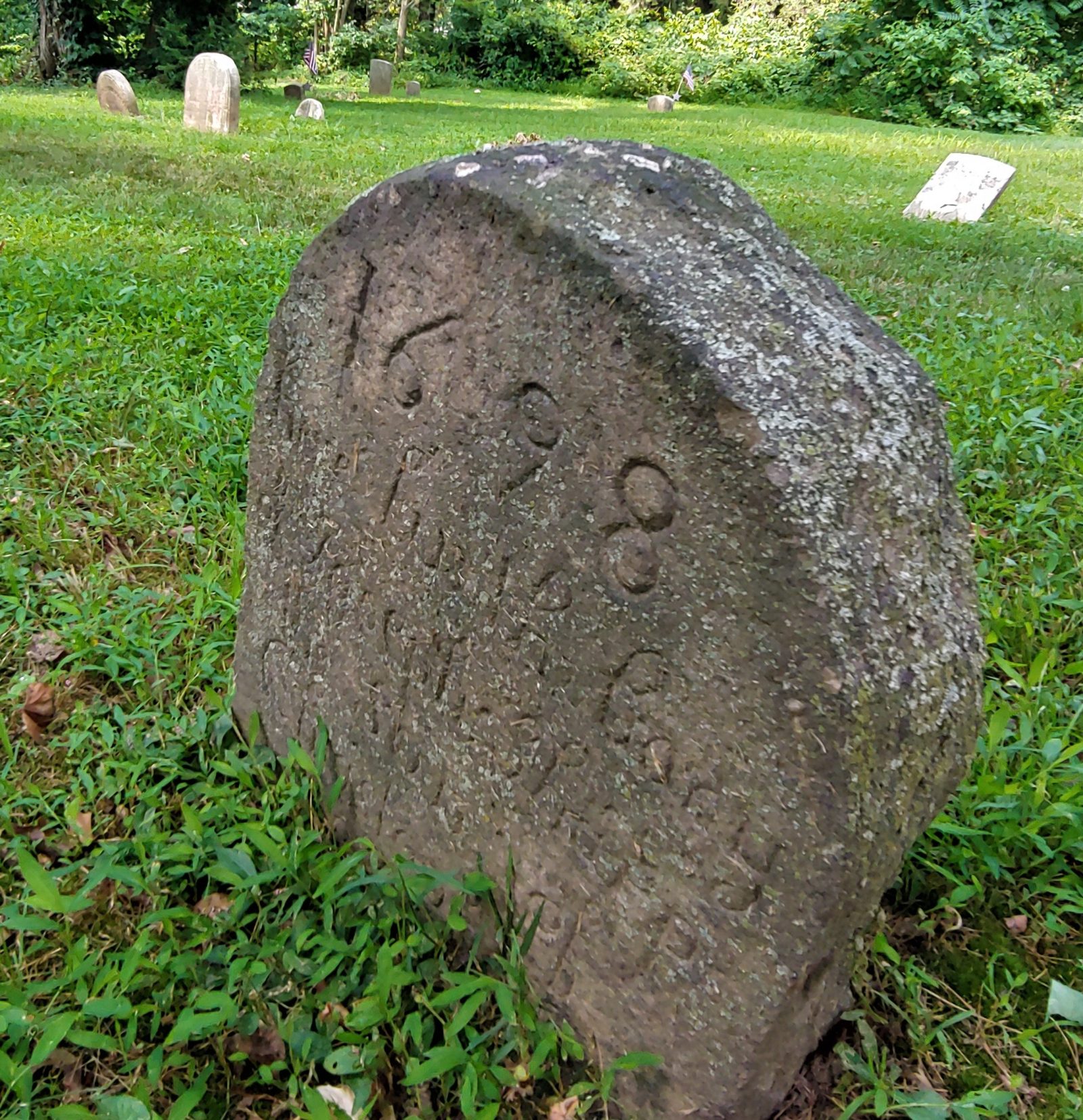History and rare horticulture intertwine at Bucks County’s oldest cemetery.
It’s been 101 years since the last interment in Slate Hill Burial Ground in 1918. The Lower Makefield cemetery is one of the two oldest in Bucks County dating to the 1600s, the other being in Fallsington village. Both were established simultaneously for Quaker settlers in Falls and Lower Makefield. Some buried at Slate Hill no doubt worshiped with William Penn at Fallsington Friends Meeting between 1699 and 1701 when he lived at Pennsbury Manor.

In 1990 the Meeting deeded Slate Hill to Lower Makefield. The hope was the township would maintain the site in perpetuity. Sadly, it’s slipping into disrepair. Efforts of a garden club and a few volunteers stave off oblivion.
As a former resident of Yardley, I have to admit I never realized the cemetery was on the far side of a stone wall along busy Makefield-Yardley Road just above Yardley Commons. Recently Anne Edwards of Newtown invited me to tour the site. Anne’s a self-described “newbie” of the Yardley-based MarthaWashington Garden Club founded in 1935. One of its civic goals is to annually remove tangled vegetation threatening to overwhelm the cemetery.

Members also do what they can to beautify Slate Hill by planting trees and flowers. A local Eagle Scout was able to repair an interior stone wall and a retired stone mason repointed portions of the main wall pushed over by vandals.
Yet the task of restoration remains monumental. A more vigorous approach is needed to fix additional wall breeches, re-right and repair tombstones and denote the history of the grounds. Ruth Logan, club project historian and long-time gardener at Slate Hill, wishes more people would get involved. “I would like to see greater participation by the community and the township in the care of this part of our history. Most residents are not aware of the public portion of the cemetery.” Anne is hopeful. “I’m very interested in Slate Hill’s history and trying to help get it restored at least to a level of respect for those buried there – which includes Civil War African-American soldiers.”
Historical and botanical markers would help. Rare and magnificent trees including American Chestnut, “Handkerchief” and “Franklinia” trees shade the grounds. Slate Hill could be a landscaped asset with benches for quiet contemplation in a cemetery nestled among elegant colonial homes. They include the Greek Revival mansion of Joshua Anderson built in 1763 across the street. He donated land adjacent to the Quaker section for a public graveyard two years after George Washington made his famous nearby crossing of the Delaware in 1776.

The extension is the county’s oldest public cemetery. In it are well-marked graves of six African American free slaves who served in the Civil War – brothers William and Torbut Ganges (32nd Infantry Regiment, U.S. Colored Volunteers that lost 150 men in South Carolina), Jefferson Mosely (25th Infantry Regiment, U.S. Colored Troops serving in Louisiana and Florida) , George Congo (sergeant, 22nd New Jersey Colored Infantry seeing action in the Battle of Chancellorsville, Va. in 1863) plus Thomas Miller and Samuel Harmon. All survived the war. The American Legion recognizes them every Memorial Day with grave side flags, gunfire salutes and the playing of “Taps”.
The entire cemetery embraces 1.4 acres in three conjoined sections, the first two being private Quaker burial grounds founded in 1686 and 1721. Out of 487 graves in the two sections, 185 have headstones including the oldest in Bucks dating to 1698. It was the “plain” habit of Quakers in the early days not to mark graves. Among prominent pioneers believed buried there are the Yardleys, town founders in the 1600s.

The lack of headstones in the older portion of the cemetery gives it a park-like essence. Martha Washington gardeners got involved in 1975 as a U.S. Bicentennial project. In 1982, the Lower Makefield Historical Commission followed up by getting the cemetery added to the National Register of Historic Places.
As I strolled the grounds with Anne, Ruth, Barbara Heisler and club President Becky Eroh, someone mentioned it’s likely the township can’t afford expensive restoration work. I suggested the group reach out to local state Sen. Steve Santarsiero of Lower Makefield and state Rep. Perry Warren of Newtown to see how they might help. The 70-member garden club remains optimistic. “What I know is Slate Hill should be cleaned up, repaired and maintained,” said Anne. “There is important history there. It should be recognized and appreciated.”
There’s a large headstone in the Quaker cemetery memorializing the life of James Duncan. He’s among 16 known Civil War veterans – both black and white – buried in Slate Hill. He was laid to rest in 1887 with the following tombstone inscription from his family:
“Green mounds are thickening
“Where sleep the true and brave.
“And over one a bird keeps watch.
“It is our soldier’s grave.”
Sources include the Slate Hill Cemetery nominating petition on file at the National Register of Historic Places; “The Founding of Falls Meeting” by Jane Moon Snipes published in The Bulletin of Friends’ Historical Association in 1933; and “Yardley gardeners put life in a burying ground” by Bridget Wingert, The Advance of Bucks County, March 6, 1980. The next cemetery cleanup is scheduled for Sept. 30 at 9 a.m. Contact Ruth Logan of the Martha Washington Garden Club at 215-493-8148, ruthlogan2@verizon.net or check www.marthawashingtongardenclub.org on the web.

